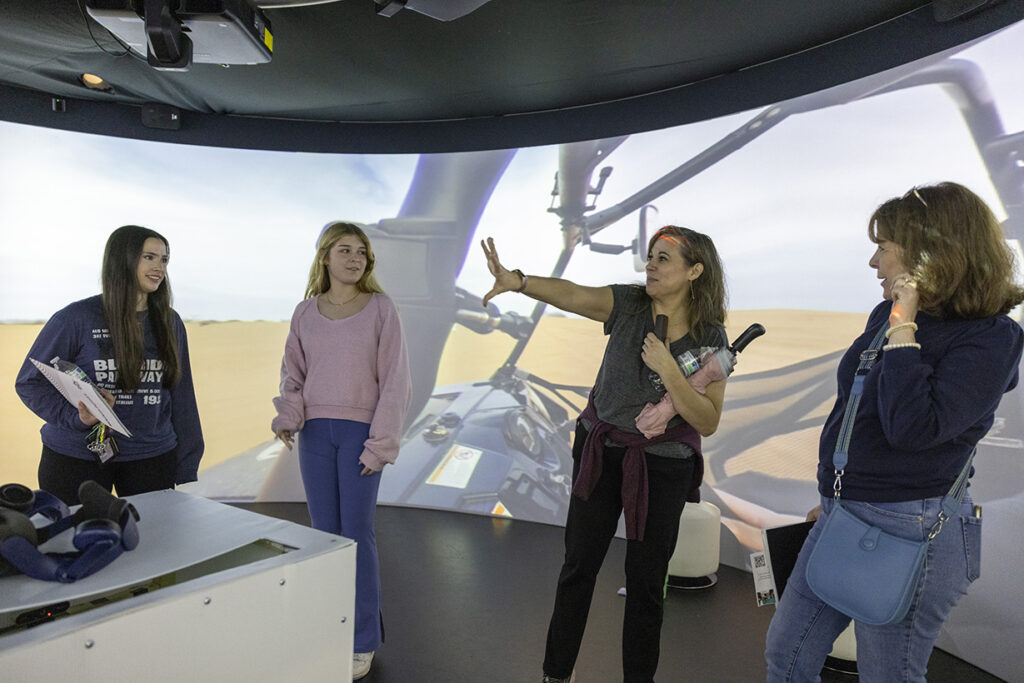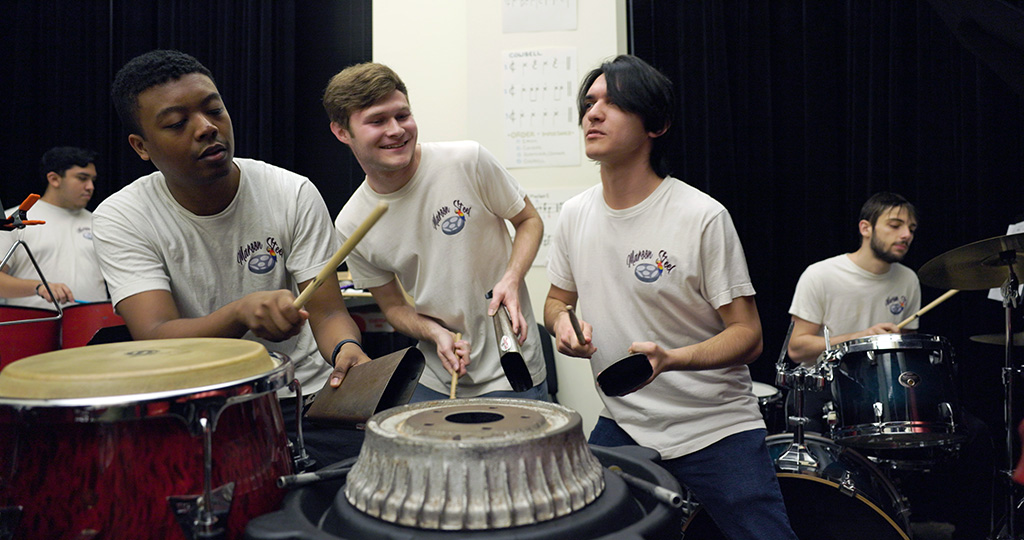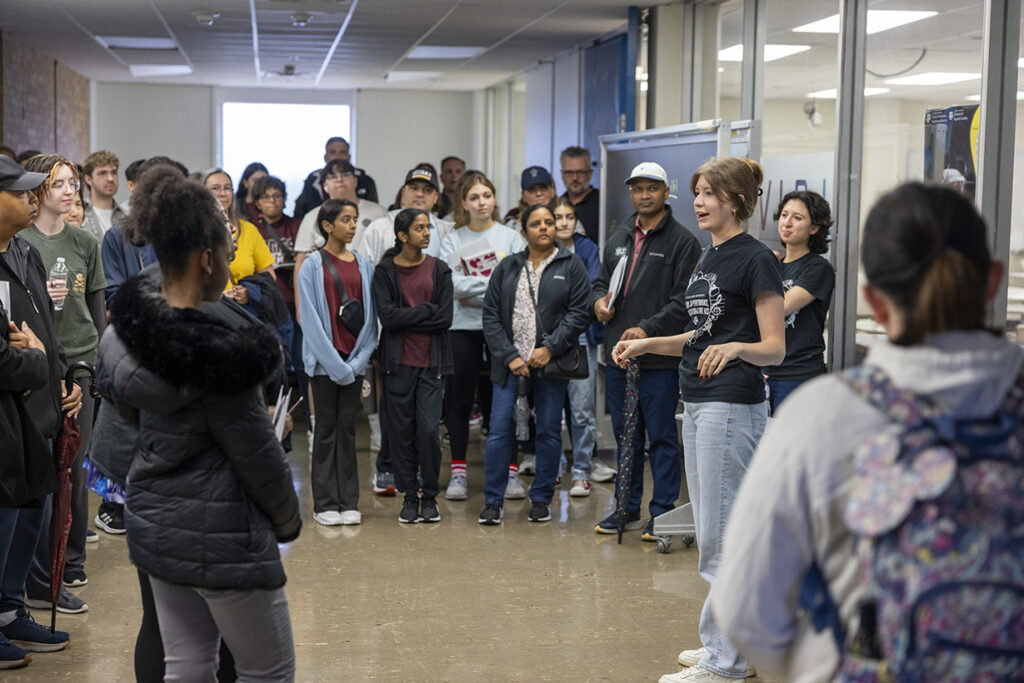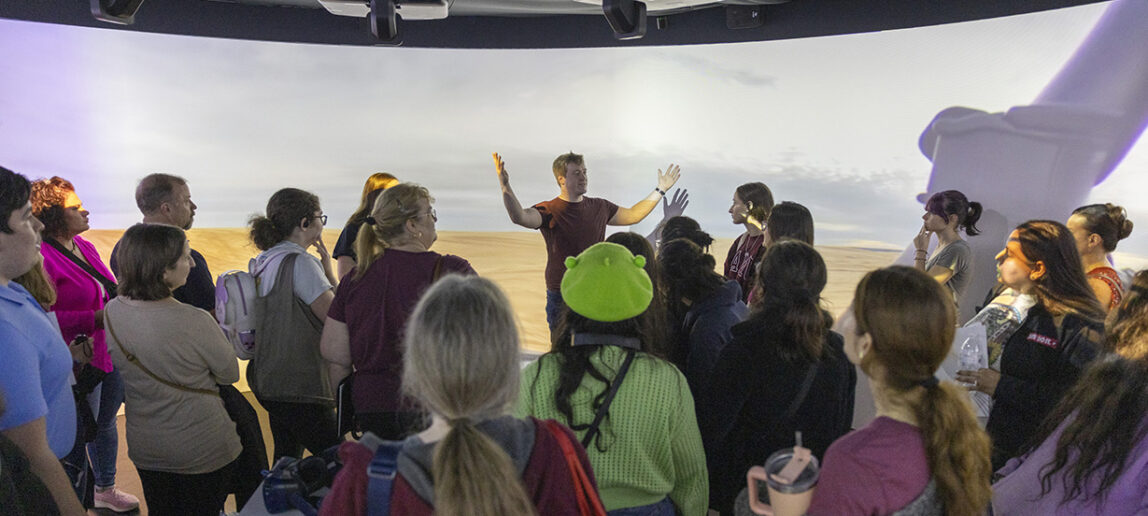Prospective Students Experience Variety Of Academic Presentations And Performances During Aggieland Saturday
Hopeful future Aggies explored the Texas A&M College of Performance, Visualization and Fine Arts with their friends and families during Aggieland Saturday on Feb. 10.
Hundreds of families braved a driving rain and were guided through the Liberal Arts and Arts and Humanities Building for a tour of the Performance Studies and Dance Science programs, and across Langford Architecture Center for the Visualization program.
Interim Dean Tim McLaughlin gave opening remarks in Geren Auditorium to welcome the students and families. He said the school was brought together for a common goal: create a space for the arts in a significant way.
“There is this mixing of performance, technology and visual art — and importantly, an understanding of the reasoning and the history of why we do these things,” McLaughlin said. “No other school that I am aware of in the country is putting that all together the way this school is.”
McLaughlin, who earned a bachelor’s degree in Environmental Design and a master’s degree in Visualization Sciences from Texas A&M, described how the school teaches across disciplines, so students can adapt to changes and overcome challenges in their industry.
“What I learned here at Texas A&M is how to approach critical thinking,” he said. “How to approach that in a fearless way — what technology does and how to blend it with art. Whether that art is performance or visual, the idea is to think about the next idea that comes along — and not shut it out, but embrace it.”
Dance Science
Carisa Armstrong, program director and associate professor, held a presentation about the Dance Science program, which offers training in ballet, modern, jazz, hip-hop and improvisation. Students are required to audition to be in the program.
Armstrong said they are looking at expanding what can be offered through technology, as they investigate where dance will be in the next 20 years. Five new faculty members have been hired during this school year, which provides new learning opportunities for students, she said.
“With new faculty, we can offer more courses for our students, which is amazing, because versatility is basically what dance is now,” she said. “This diversity strengthens our program and the students’ education.”
To showcase some of the work produced in the program, guests were able to view a duet performed by students and choreographed by Jessica Boone, visiting lecturer, in the Black Box Theater.

Performance Studies
Professors in the Performance Studies program visited with interested students and shared their insight on the program. Dr. Kim Kattari, undergraduate program director, emphasized the smaller class size, which allows students opportunities to pursue focused interests, along with the course variety — from music to theatre and “everything in between.”
Introductions were also given by Dr. Angenette Spalink, assistant professor; Dr. Francesca Marini, associate professor; Dr. Will Connor, lecturer; Dr. Matthew Campbell, assistant program director; and Dr. Patrick Sullivan, instructional assistant professor.
Robert Rutherford, senior Performance Studies major, said he was encouraged to expand his horizon by embracing all program opportunities to learn something new.
“If you play guitar, by the time you finish Performance Studies, you aren’t just a guitarist,” Rutherford said. “Or if you sing, you aren’t just going to be a vocalist. You’re going to be a performer, an artist, a researcher, a scholar. You are essentially an academic at that point, while also having a creative outlet. That is what I truly love about Performance Studies.”
Three additional students in the Performance Studies program also spoke: Kamren Lang, Róisín Alexis and Colton Neuville. Guests visited student organization booths and viewed performances by student band Maroon Steel. Members of Alpha Psi Omega performed an excerpt from “Pride and Prejudice.”
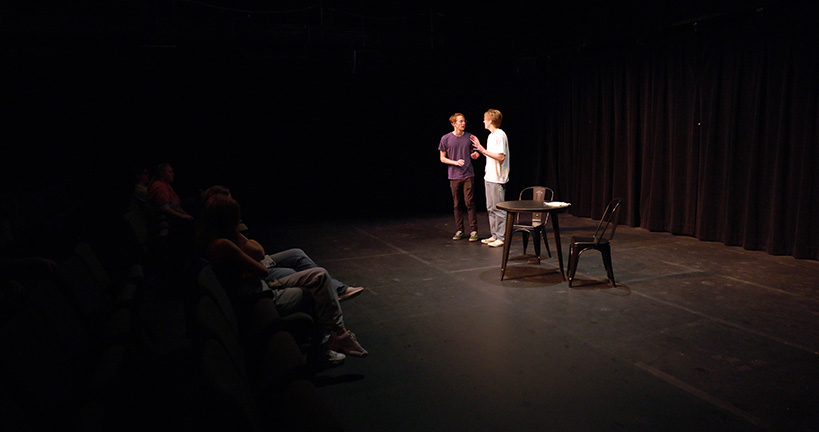
Visualization
Jill Honeycutt, instructional associate professor and associate undergraduate program director, and Hadeel Ramadan, instructional associate professor and undergraduate program director, led a discussion about opportunities for students in Visualization.
Honeycutt described the program as exploring the “art and science of visual communication through traditional and digital media, by merging all of these art forms into one beautiful thing.”
Students will be exposed to a studio-based culture, a design-learning approach and interdisciplinary efforts, she said. With a 92.5% retention rate, the program offers a balance of creativity, problem-solving and stability for each student, Honeycutt said.
“We want to make sure when you walk out the door, you can solve a problem creatively,” she said. “We promote a breadth of knowledge with emphasis on the principles of technique.”
Guests toured the program’s labs, and the Igloo Studio drew particularly large crowds as people asked questions about the 360-degree screen, intrigued by the collaborations among the school’s three disciplines.
Taryn Shamma, a high school sophomore, traveled from League City with her mother, Tracy Shamma, Class of ’89, hoping to become the fourth Aggie generation in the family.Following the facility tour and presentations, Tracy said she was impressed that some of the faculty are former students.
“If people are that dedicated and want to come back to teach in the program, then it shows that it’s a really strong program,” Tracy said.
Taryn said she dreams of becoming an animator, and that she appreciated the variety of degree options offered.
“I used to think the Visualization program was only for art and animation,” Taryn said. “I didn’t know there was also web design and game design. Overall, this whole school gives more people the opportunity to be an Aggie, which is what makes Texas A&M the best school.”
